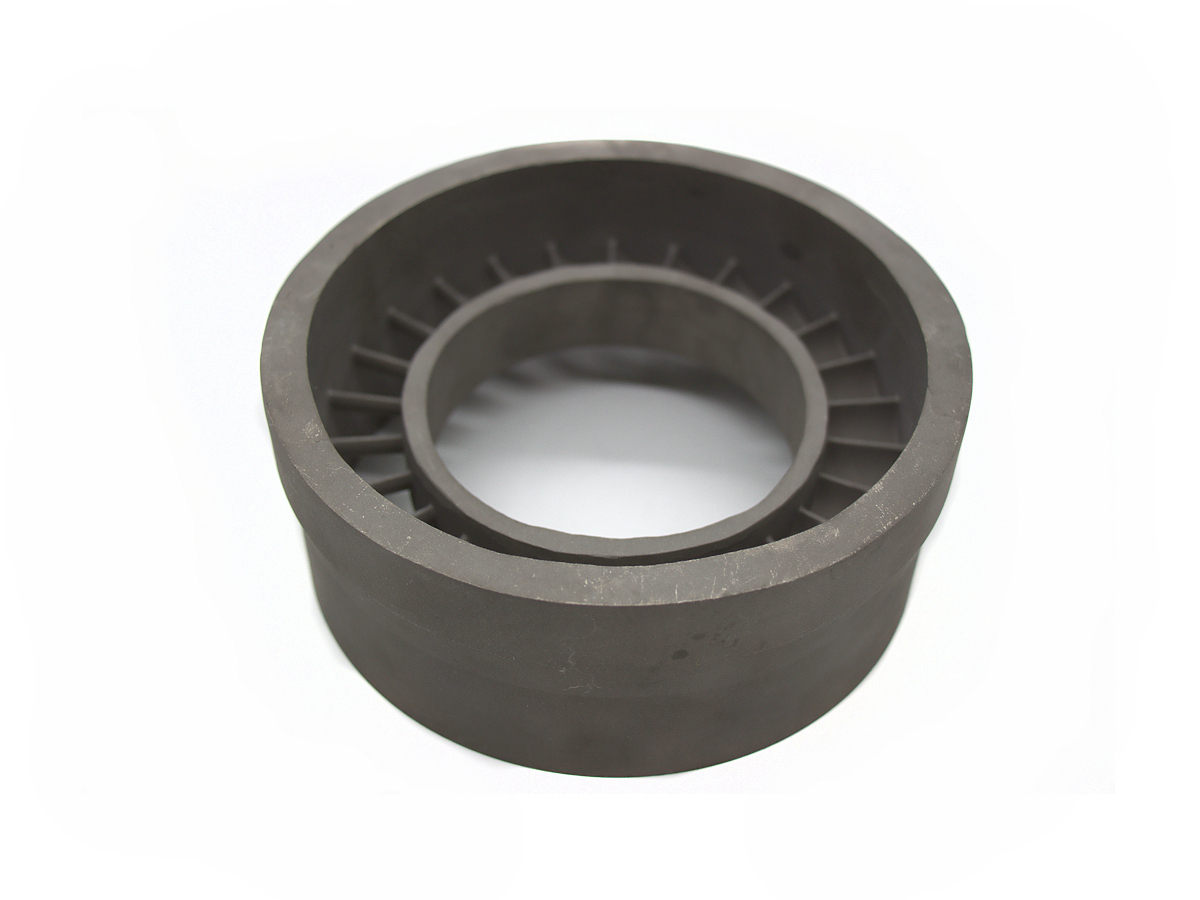Powering Nuclear Energy: How Hastelloy and Inconel CNC Machined Parts Improve Reactor Efficiency
Introduction
The nuclear energy industry operates under extreme thermal, mechanical, and radiation conditions, requiring materials with exceptional stability and performance. Superalloys such as Hastelloy C-276, Hastelloy X, Inconel 718, and Inconel 625 offer superior corrosion resistance, high-temperature stability, and mechanical strength, making them essential for reactor cores, coolant systems, heat exchangers, and safety-critical components.
Advanced CNC machining processes enable precise fabrication of complex Hastelloy and Inconel components with extremely tight tolerances and excellent surface finishes. Precision machining directly enhances the efficiency, safety, and operational reliability of nuclear reactors, optimizing reactor performance and extending service life.
Hastelloy and Inconel Materials for Nuclear Reactors
Material Performance Comparison
Material | Tensile Strength (MPa) | Yield Strength (MPa) | Max Operating Temp (°C) | Typical Applications | Advantage |
|---|---|---|---|---|---|
1240-1450 | 1034-1207 | 700 | Reactor bolts, structural components | Excellent fatigue resistance, high strength | |
827-1103 | 414-758 | 982 | Heat exchangers, reactor vessels | Outstanding corrosion resistance, weldability | |
750-900 | 350-450 | 1038 | Coolant pipes, pumps, valves | Exceptional corrosion resistance, thermal stability | |
755-965 | 385-690 | 1204 | High-temperature reactor components | Superior oxidation resistance, strength at high temperatures |
Material Selection Strategy
Selecting Hastelloy and Inconel alloys for nuclear reactor components requires precise consideration of thermal loads, corrosion resistance, and mechanical demands:
Reactor bolts, structural supports, and safety-critical fasteners operating under mechanical stresses and temperatures up to 700°C choose Inconel 718 due to its high tensile strength (up to 1450 MPa) and fatigue resistance.
Reactor vessels, containment structures, and heat exchangers exposed to corrosive environments and elevated temperatures (up to 982°C) benefit significantly from Inconel 625, offering excellent corrosion resistance and strong weldability.
Components like coolant pipes, pumps, and valves requiring extreme corrosion resistance and stable performance at temperatures up to 1038°C utilize Hastelloy C-276, ensuring reliability and extended lifespan.
High-temperature reactor internals and combustion-related components operating at temperatures up to 1204°C leverage Hastelloy X, ensuring robust thermal stability and oxidation resistance.
CNC Machining Processes
Process Performance Comparison
CNC Machining Technology | Dimensional Accuracy (mm) | Surface Roughness (Ra μm) | Typical Applications | Key Advantages |
|---|---|---|---|---|
±0.02 | 1.6-3.2 | Structural supports, brackets | Cost-effective, dependable accuracy | |
±0.015 | 0.8-1.6 | Rotational fittings, reactor components | Enhanced precision, reduced machining setups | |
±0.005 | 0.4-0.8 | Complex valve bodies, turbine blades | Superior dimensional control, excellent finishes | |
±0.003-0.01 | 0.2-0.6 | Micro-components, critical reactor parts | Maximum precision, complex geometries |
Process Selection Strategy
Choosing CNC machining methods for nuclear reactor components made from Hastelloy and Inconel alloys involves precision, complexity, and safety requirements:
Structural supports and simple reactor brackets needing moderate precision (±0.02 mm) are efficiently machined using 3 Axis CNC Milling, offering cost-effective production and reliable quality.
Rotational and moderately complex reactor components, such as coolant fittings and pipe connectors, requiring improved accuracy (±0.015 mm) benefit from 4 Axis CNC Milling, significantly enhancing production efficiency.
Critical nuclear components such as turbine blades, valve bodies, and intricate internal parts demanding tight tolerances (±0.005 mm) and optimal surface finishes (Ra ≤0.8 μm) utilize 5 Axis CNC Milling, ensuring maximum reliability.
Micro-components, specialized valves, and critical precision reactor elements requiring extreme dimensional accuracy (±0.003 mm) leverage Precision Multi-Axis CNC Machining for optimal safety and operational performance.
Surface Treatment
Surface Treatment Performance
Treatment Method | Corrosion Resistance | Wear Resistance | Max Operating Temp (°C) | Typical Applications | Key Features |
|---|---|---|---|---|---|
Exceptional (>1000 hrs ASTM B117) | High (HV1000-1200) | Up to 1150 | Turbine blades, reactor components | Outstanding thermal insulation, enhanced life | |
Excellent (~900 hrs ASTM B117) | Moderate | Up to 300 | Valves, coolant passages | Ultra-smooth surfaces, improved corrosion resistance | |
Outstanding (>1000 hrs ASTM B117) | Very High (HV1500-2500) | Up to 600 | High-wear reactor parts | Superior hardness, friction reduction | |
Excellent (≥1000 hrs ASTM B117) | Moderate | Up to 400 | Reactor brackets, fittings | Enhanced corrosion protection, surface cleanliness |
Surface Treatment Selection
Selecting appropriate surface treatments for nuclear components depends on their operational conditions and performance demands:
Turbine blades, combustion components, and reactor internals operating at extreme temperatures (up to 1150°C) utilize Thermal Barrier Coatings (TBC), significantly improving thermal insulation and operational efficiency.
Precision valves, coolant passages, and internal reactor components requiring smooth surfaces (Ra ≤0.4 μm) and corrosion resistance benefit from Electropolishing, ensuring reduced friction and better flow efficiency.
Components facing severe wear and friction conditions, such as reactor valves and bearings, choose PVD Coating to extend their lifespan through extreme hardness (HV1500-2500) and friction reduction.
Structural reactor fittings and brackets exposed to corrosive environments require Passivation, providing reliable surface cleanliness and superior corrosion protection.
Quality Control
Quality Control Procedures
Dimensional inspections using advanced Coordinate Measuring Machines (CMM) and optical comparators.
Surface roughness verification with precision profilometers.
Mechanical property testing (tensile strength, yield strength, fatigue) following ASTM standards.
Corrosion resistance testing via ASTM B117 (Salt Spray Test).
Non-destructive testing (NDT), including ultrasonic and radiographic inspections.
Comprehensive documentation adhering to ASME NQA-1 and ISO 9001 nuclear industry standards.
Industry Applications
Nuclear Reactor Component Applications
Reactor vessel and structural components.
Coolant system pipes, pumps, and valves.
Heat exchangers and steam generator parts.
High-temperature internal reactor components and fasteners.
Related FAQs:
Why are Hastelloy and Inconel alloys crucial for nuclear reactors?
How does precision CNC machining improve reactor efficiency?
Which Hastelloy and Inconel alloys are optimal for nuclear applications?
What surface treatments enhance Hastelloy and Inconel reactor components?
What quality standards apply to CNC machined nuclear reactor components?

